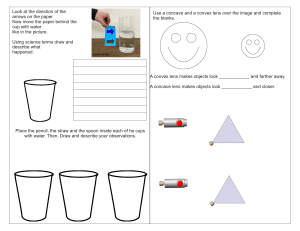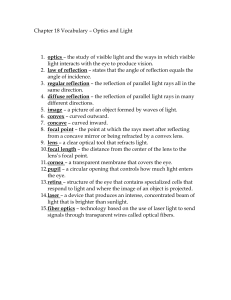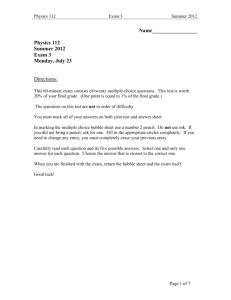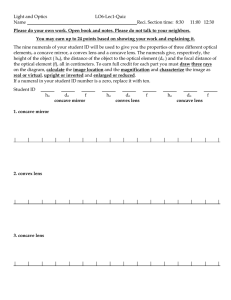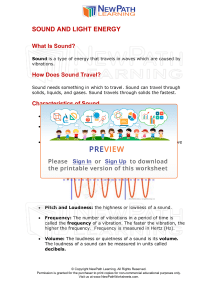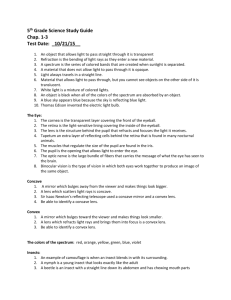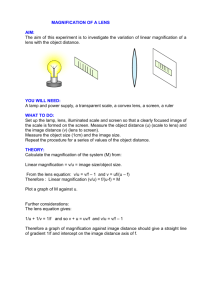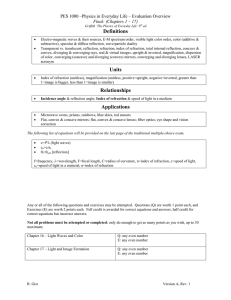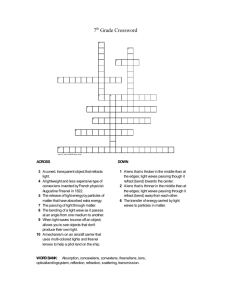Light and Lasers SG - UMS-Wright Preparatory School | Haiku
advertisement
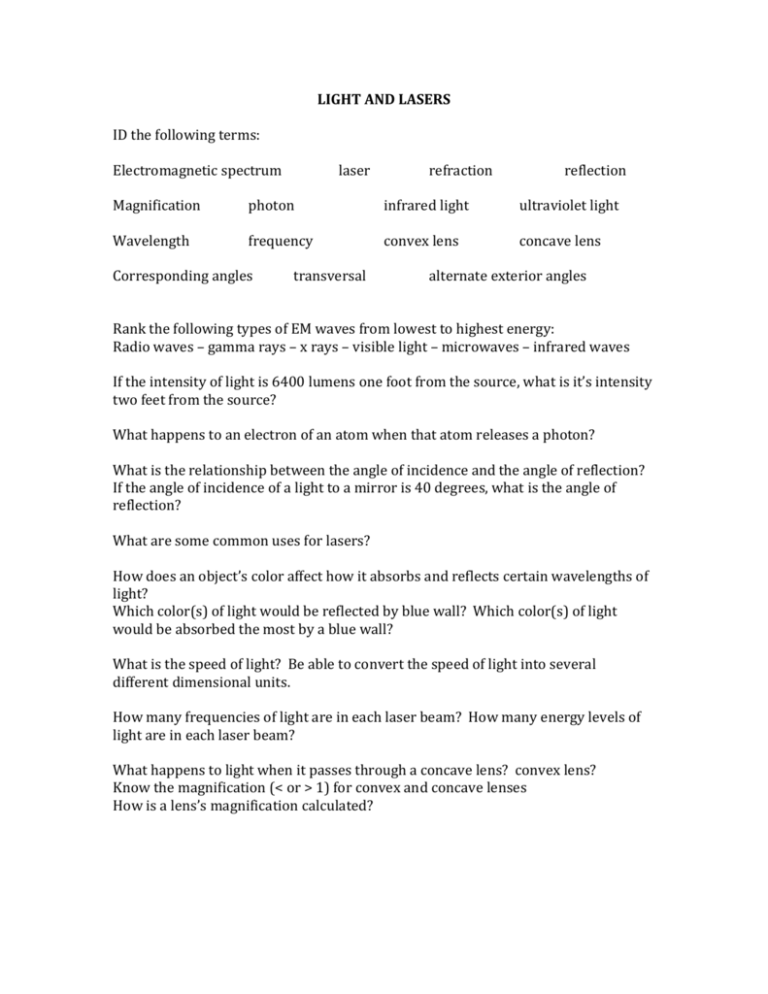
LIGHT AND LASERS ID the following terms: Electromagnetic spectrum laser refraction reflection Magnification photon infrared light ultraviolet light Wavelength frequency convex lens concave lens Corresponding angles transversal alternate exterior angles Rank the following types of EM waves from lowest to highest energy: Radio waves – gamma rays – x rays – visible light – microwaves – infrared waves If the intensity of light is 6400 lumens one foot from the source, what is it’s intensity two feet from the source? What happens to an electron of an atom when that atom releases a photon? What is the relationship between the angle of incidence and the angle of reflection? If the angle of incidence of a light to a mirror is 40 degrees, what is the angle of reflection? What are some common uses for lasers? How does an object’s color affect how it absorbs and reflects certain wavelengths of light? Which color(s) of light would be reflected by blue wall? Which color(s) of light would be absorbed the most by a blue wall? What is the speed of light? Be able to convert the speed of light into several different dimensional units. How many frequencies of light are in each laser beam? How many energy levels of light are in each laser beam? What happens to light when it passes through a concave lens? convex lens? Know the magnification (< or > 1) for convex and concave lenses How is a lens’s magnification calculated?
